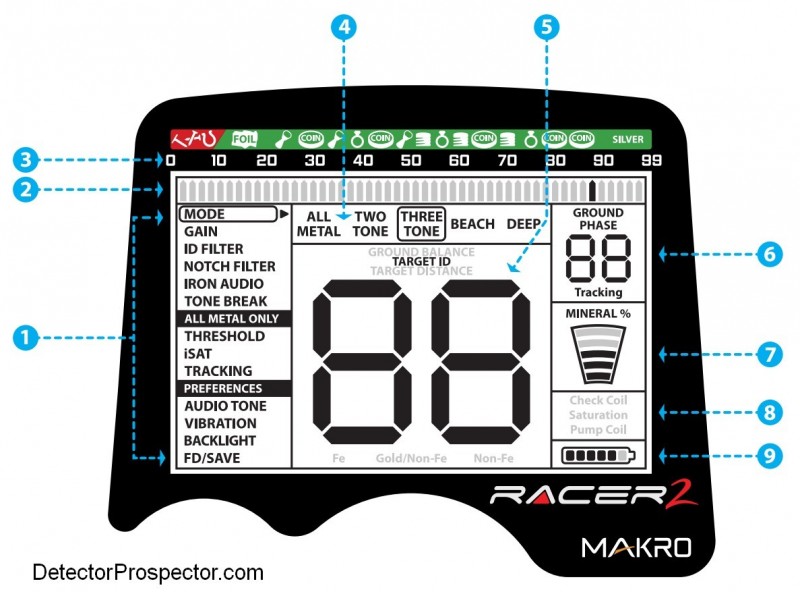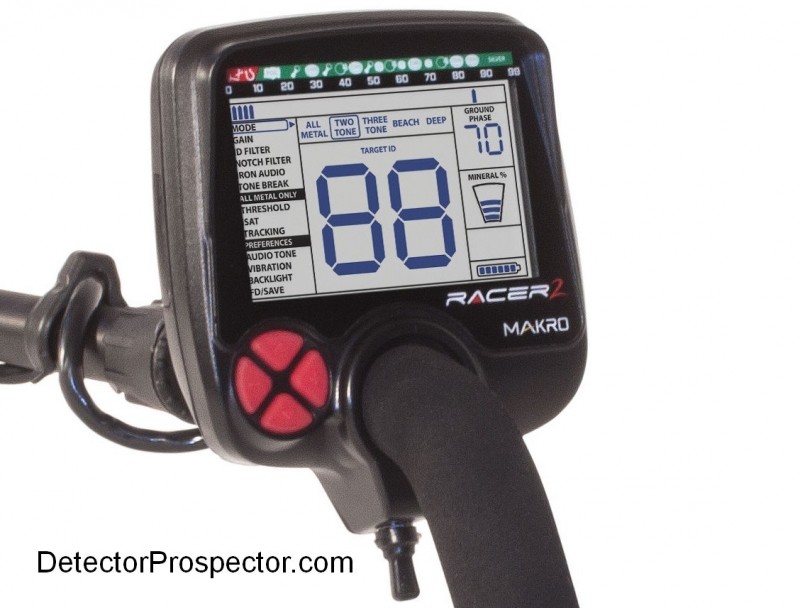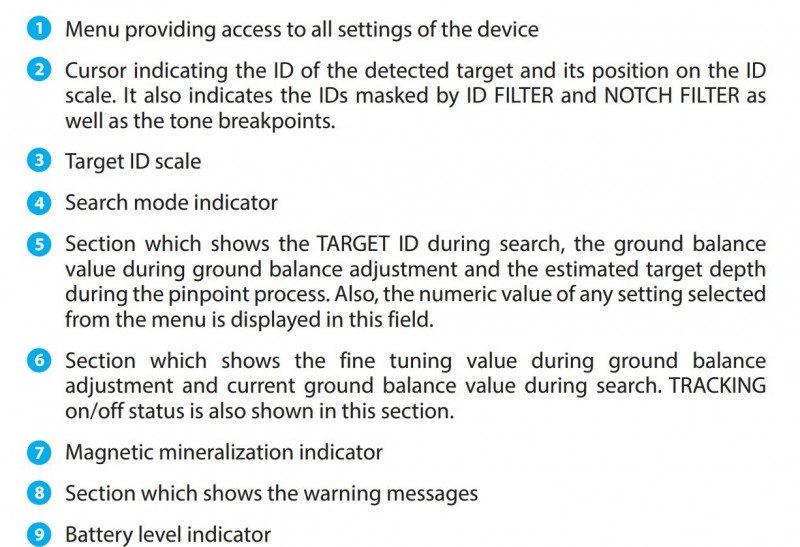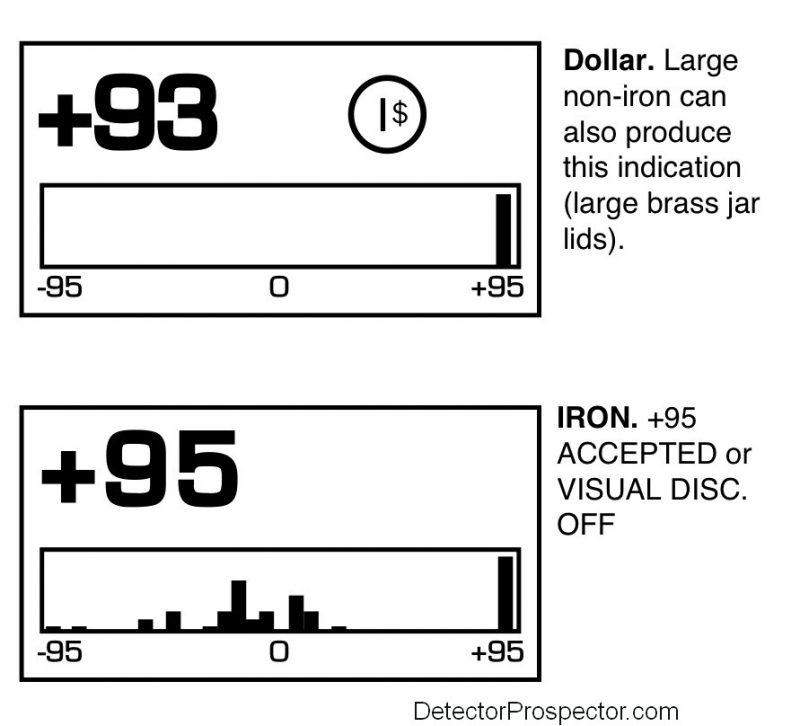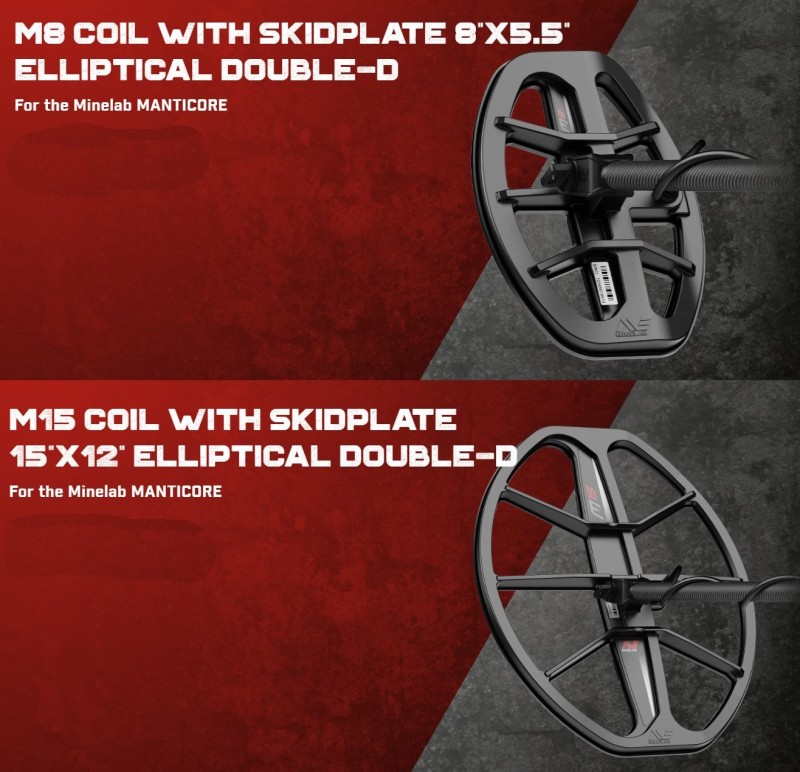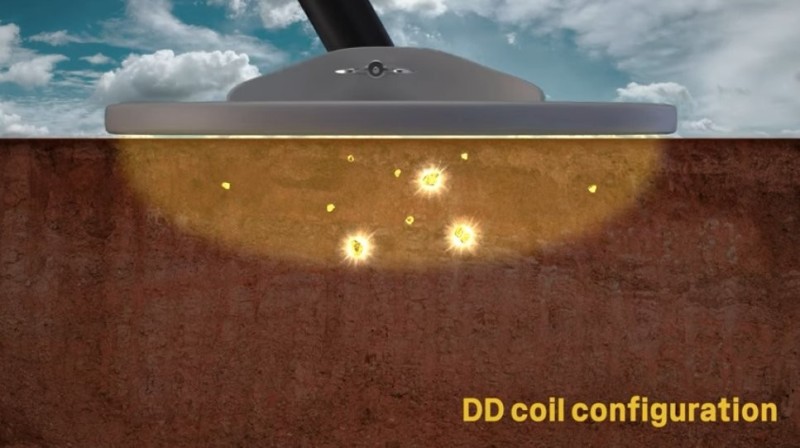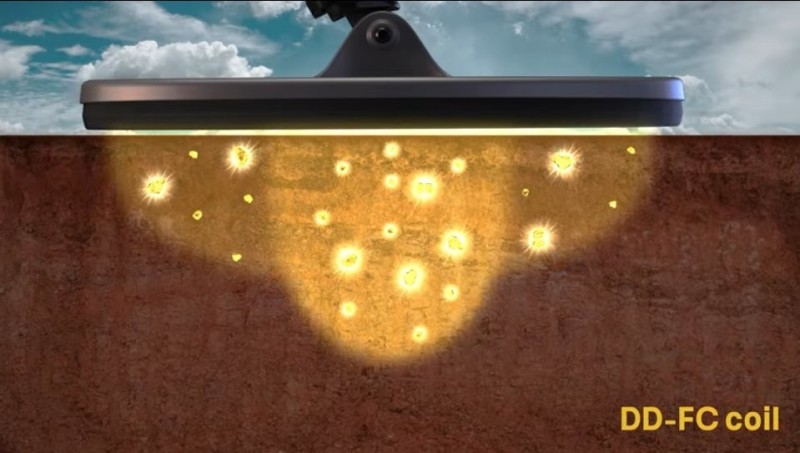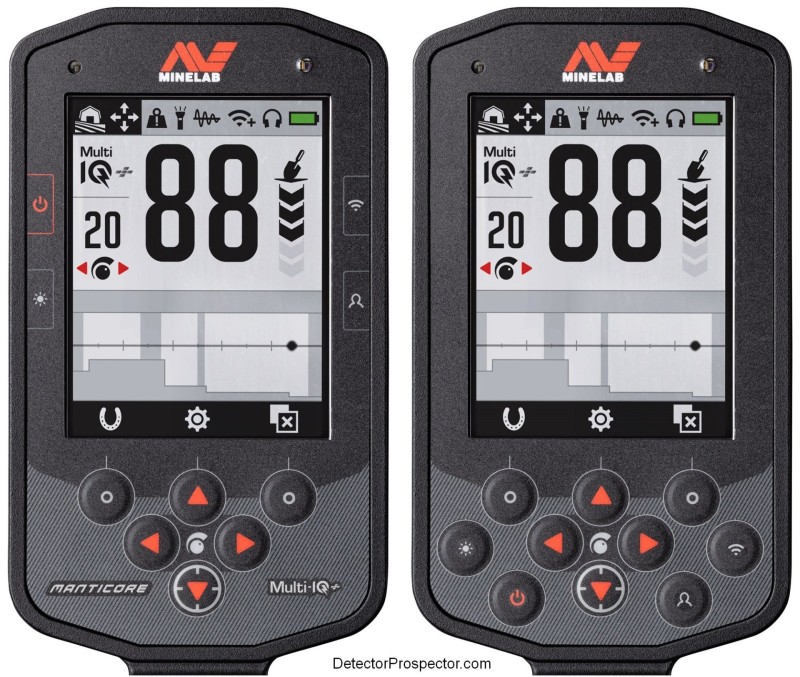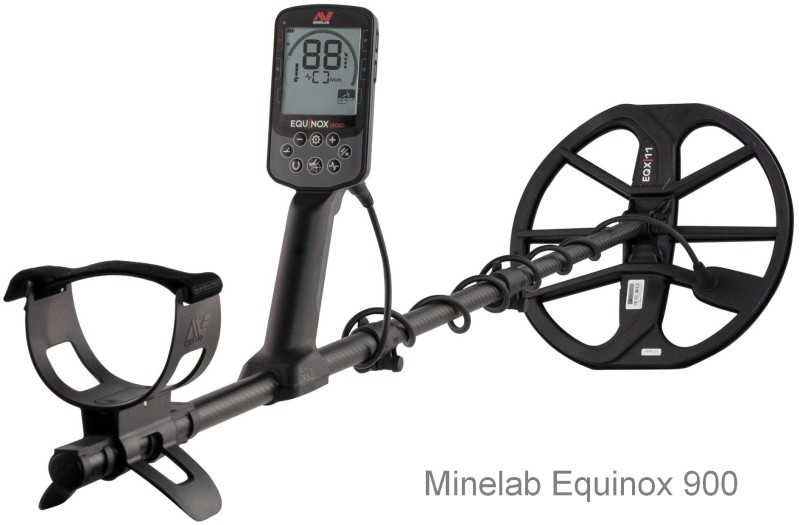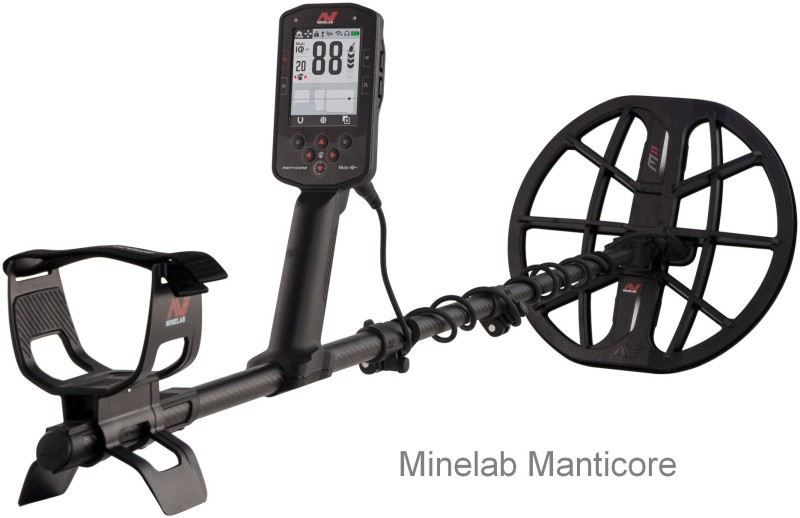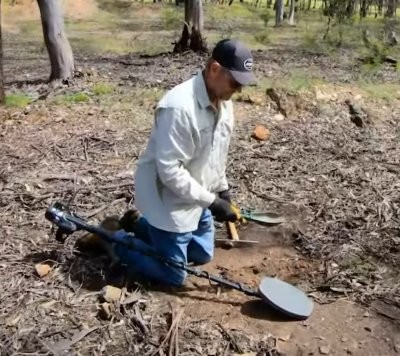-
Posts
19,790 -
Joined
Content Type
Forums
Detector Prospector Home
Detector Database
Downloads
Everything posted by Steve Herschbach
-
You actually only need like four buttons and a proper menu. To this day I think the Makro Racer 2 had one of the best displays ever. Everything right there in English instead of cryptic icons. With the screens we have theses days the language could change with the push of the button, but that's a different issue. Main thing is all options on left. Up and down buttons go both directions so no endless scrolling if you need to go back one. Get to option, left and right arrow adjusts up and down. In this case we have a trigger for pinpointing but a button is fine also, whatever. But four buttons and one more button or a trigger can do all you ever need. Makro Racer 2 LCD display and controls Makro Racer 2 screen layout Makro Racer 2 screen and control descriptions
-

New Laws In England On Treasures Found
Steve Herschbach replied to Valens Legacy's topic in Detector Prospector Forum
It’s a difference that does not really change things much. Everything I found in the U.K. was examined and that does not change. Only something truly exceptional that would trigger this, and for most detectorists things will go on as they always have. -
Good to hear from you Monte. I've used a few detectors and done a few comparisons also. In my experience neither single frequency or multifrequency can claim to be best for all uses. In some situations a detector and coils made from the ground up and finely tuned at a single frequency can be a superior performer. To quote what you say about SMF models, I would say of signal frequency models "some do have certain strengths for certain applications." However, I also think for that those strengths are more limited and only applicable to specific situations. For instance, you can make a single frequency detector that will handle salt water fairly well, like the 2.4 kHz Fisher 1280X on up to the Tesoro Tiger Shark at 12.4 kHz. However, and higher in frequency they react with salt water, and so tend to be relatively dead to small gold in order to handle salt water. They als struggle to handle both salt water and beach black sands minerals at the same time. It was multifrequency that clearly and resoundingly solved this inability to ground balance to both salt water and ground minerals at the same time. In my world it meant I always needed two detectors, one for beach detecting, and one for gold nugget prospecting. This was the case all the way up until the SMF Minelab Equinox was introduced. It is superior to any single frequency beach option. And at the same time, it's SMF Gold Mode is more powerful than it's single frequency options for gold prospecting. EMI is not an issue for me most places I hunt, and so unlike you I almost never employ the single frequency options on the Equinox as they deliver less performance in almost all situations, not more. The times they do not are the exceptions, not the rule. The only way to beat a Nox for gold prospecting is in very specific situations on very specific gold i.e. the tiniest, and that's where a finely tuned detector like the Garrett 24K does have a bit of an edge. But overall if forced to choose one, I'd keep the Equinox and ditch the 24K, because the Equinox slays the 24K for larger gold nuggets, and that is where the weight and the money are for gold prospectors. Again, it's a specific thing versus overall usefulness and versatility. Long story short the SMF Equinox is the first detector I ever saw that could handle both salt water detecting and gold nugget prospecting so well as to mean I could do without multiple detectors for those tasks if I choose. But like you I see little edges here and there for specific uses and so I keep something like the 24K around just in case. That said, I never used it to find gold once last year. So thank you for clarifying, and I certainly agree if you limit the situations to specific examples single frequency can shine. But for sheer versatility and ability to handle multiple situations well it's hard to beat a top performing SMF detector that has some single frequency options. In many places like the beach they are clearly superior. That's why the vast majority of people are choosing those detectors over the single frequency options available today. Best wishes in fighting father time and getting in some more detecting. That's my main priority these days and frankly the this versus that stuff has gotten old for me. It's just getting in a few more days detecting while I can that matters most to me, and I'm sure you would agree. Take care, and best wishes. Steve H
-

Garrett Axiom Vs Minelab SDC 2300
Steve Herschbach replied to HardPack's topic in Detector Prospector Forum
Welcome to the forum. Nice to hear a new perspective from a new person. Thanks for sharing. -

Not Another Deus 2 Comparison Video!
Steve Herschbach replied to CPT_GhostLight's topic in XP Deus II Forum
It's not that you get a more accurate id per se, but that you hear more directly what the detector itself is actually seeing. Let's say you have 100 targets that read individually from 1 - 100. In full tones you hear most of the differences (not all because your ear lumps frequencies together). Now you go to a 10 tone setting. The targets are not so much averaged as dumped together in groups of ten. Then five tone or three tones, whatever, many targets get grouped together as single targets. The downside is less target resolution. The upside is very stable target tones. Most ferrous targets actually produce a range or smear of target id numbers. But most detectors can only display one number at a time, and the tone for that number. If a ferrous item is producing false high tones, as is common, then all you might hear is the high tone. In full tones you tend to hear a mix of ferrous tones and the high tone, making it more obvious the item is ferrous. This is actually visible on displays that can show multiple target id results at the same time. This is the White's DFX SignaGraph display, which shows all target id numbers at once. Here we have a silver dollar, and an iron target that is producing a mess of target id, with a high tone 95 predominating. Note that the target id number displayed is almost identical. If your detector can only display a single number both appear to be a silver dollar. If you are set for only a few tones, the detector will most likely just let you hear that high tone spike, so it sounds like a silver dollar. Yet looking at the display they are completely different targets. And in full tones, you'd be hearing those other tones coming through. It's why I and many other people only hunt in full tones. It more accurately reveals ferrous targets for what they are. Yeah, it takes some time to train your ear, but that's all it is, a training issue. My main advice is keep the volume at low to moderate levels so the barrage of tones is a pleasant instead of a head bashing experience. I love full tones - it's literally music to my ears. Take it away, and I feel like you are taking away critical information. It's like losing most of my hearing. Would you only want to hear three tones in real life? Think on how much you would not hear. -
I do think that the best gold areas do tend to be the higher mineral areas. The Alaska and New Zealand examples are fairly low grade low production gold locations, with large nugget being rare. Just lots of little stuff. So "In fact, the worse the soil is and the more hot rocks there are, the better the odds of walking over a nugget." is not inaccurate as a generality, but that is all it is. I think sometimes it's being open to the exceptions that makes for the best prospecting.
-
Great post GC, but that line is not entirely accurate. There are very large low mineral areas that carry plenty of gold. It's just that people focus on their own experiences, and unless you have found gold all around the world, well, then you only see what you see. Alaska has some of the largest low mineral terrains in the world. Bedrocks comprised of low grade metamorphic and sedimentary rocks like slates, shales, siltstones, graywacke and conglomerates with almost no magnetite content. I could run a 6" gold dredge for a 10 hour day and have no more than a few spoonfuls of magnetite. Yet the bedrock is cut with low temperature quartz veins that carry gold and glaciers have dispersed it over a wide region. The area I am talking about is as large as many other states in the U.S. "The sedimentary rocks of the Seward-Sunrise region consist principally of interbedded dark-colored graywackes and black or bluish-black slates and argillites, with a few interstratified beds of conglomerate and quartzite and still fewer beds of dark-gray limestone. The thickness of the slate and graywacke beds varies from a few inches to many feet. The relative proportions of the slates, argillites, graywackes, and conglomerates differ considerably from place to place, conglomerates being the least abundant. The slates and argillites need no particular description. The graywackes are massive sedimentary rocks, composed chiefly of angular fragments of quartz and feldspar, usually orthoclase and acidic plagioclase. Flat angular fragments of slaty rock appear in many of the beds. Because of their uniform width and longitudinal extent these graywacke beds are often called " dikes " by prospectors. In local usage they are also often referred to as diorites, but the sedimentary origin is in most places readily discernible. The conglomerates contain well-rounded pebbles of argillaceous rocks, granite, quartzites, and quartz." "The ores are simple in composition. The gangue is quartz with here and there a little calcite, and the ores contain sulphides in various amounts. The principal sulphide is arsenopyrite, but galena, pyrite, and sphalerite occur in subordinate quantities. Pyrrhotite, molybdenite, and chalcopyrite are also present in some of the ores, and gold tellurides have been reported. The ores are free milling. The gold occurs free in the quartz and also in close association with the sulphides, some of it being included in the galena and arsenopyrite grains." Source However, Alaska is huge and it certainly has some very high mineral locations, including the worst graphitic hot rocks I've seen anywhere. They read exactly like gold and will completely defeat a VLF detector. Our own phrunt here is hunting in New Zealand, which shares almost exactly the same geological characteristics as Southcentral Alaska. Very low mineral ground, and this is good in both cases as the gold nuggets are not very large, with nuggets over a gram being big stuff. Lots of fairly low mineral ground here in Nevada also. Long story short the old adage of "gold is where you find it" applies, and gold occurs in a very wide range of mineralization backgrounds. In my detecting career gold from low mineral locations has been as prevalent if not more so than gold from highly mineralized locations. Models and Exploration methods for Major Gold Deposit Types There is a degree of overlap in gold, ground, and hot rocks. Eliminating ANY ground signal and ANY hot rocks will most likely also eliminate or reduce certain gold signals. The more aggressive the ground and hot rock elimination, the greater the risk. That's just the way it is and anyone that thinks they are not leaving some nuggets in the ground does not understand the technology we are using.
-

Equinox 900 Or Manticore?
Steve Herschbach replied to Steve Herschbach's topic in Metal Detector Advice & Comparisons
No, not in this case. It's just that I'd be happy with just these two in addition to the 11" for my intended uses, and I doubt we will be waiting much longer for them. If anything else shows up someday that's fine also, but I'll not be holding my breath. Of the two I want the 5.5x8 way more than the 12x15, and it might actually be the coil I'd use the most over even the 11". That should really make the Manticore a joy to swing, and be a great general park and relic hunting coil for high trash locations. That coil alone could tip me from Deus 2 to Manticore if XP does not come out with the 5.5x9 coil for D2 by 2024. -
Not to start a pissing match, but I saw nothing in Australia any worse than what I see in the Sierra Mother Lode country, and if anything the issues with dense magnetite soil are worse in the Sierras. There is a place here us locals talk about that to this day the best Minelab machines can barely function in, and so only the largest and shallowest nuggets get found. But yeah, it's an iron mine. The bottom line is geology is local, not a national thing, and localized areas anywhere in the world can be extreme. Bruce Candy himself says that in longer fashion below. From Bruce Candy at https://www.detectorprospector.com/files/file/52-metal-detector-basics-and-theory/: "In geologically new soils, the degree of mineralisation is usually weak, except for some volcanic soils. These relatively new soils are commonly found in North America and Europe (from glacier scrapings during the last ice age and mountain erosion etc). In contrast, surface soils which have remained surface soils for a long time often have high mineralisation, because the action of water, over a long period, causes iron compounds to migrate to the surface. For example, Australia has old soils, having had no glaciers recently or significant mountains to be eroded. Some volcanic rocks or sands, known as black sands, may be highly mineralised and are found, for example, in a few USA mainland and Hawaii areas. These black sands (or rocks) are made of mostly magnetite, an iron oxide called ferrite. These typically produce almost entirely X signals, and almost no R. They are heavy, that is they have a high density, and can be identified because they are strongly attracted to a magnet. Small roundish magnetite/maghemite pebbles (a few mm in diameter) are also attracted to a magnet. These, for example, may be found in many Australian goldfields, but do produce significant R signals. Thus, USA goldfields are typically different from Australian goldfields: The USA soils are mostly mildly mineralised but in some areas may contain either nearly pure magnetite black sands or rocks, which are problematic for metal detectors as they have very high X components (strongly attracted to magnets). Australian goldfields have highly mineralised soils, but very few black sands or rocks that contain nearly pure X magnetite. The magnetic materials are in the forms of magnetite-rich small pebbles and rock coatings, clays and general “sandy” soils. These all contain magnetic materials that produce high levels of X signals as well as R. The ratio of X and R is random, and the R component arises from extremely small magnetic particles called superparamagnetic materials, which are discussed below."
-

A Video Explaining The Garrett Focused Core DD Coils
Steve Herschbach replied to phrunt's topic in Garrett Metal Detectors
It's just the opposite. There is no reduction in what the DD is doing but the addition of a deeper more sensitive spot in the middle. Take away the hot spot in the middle and now you have a standard DD coil. You have given up nothing, only gained. If you want the full benefit of that hot spot you do have to work as if it's all the coil there is. But you can also just ignore it and hunt larger deeper gold and threat the coil like a standard DD. The diagrams are using small gold as examples. If it was only gram and larger than the field pattern looks more like a standard DD. It's only as the gold gets real msall that focusing on the center region is important. Eventually somebody will make standard DD coils for the Axiom and it may take that for people to really understand what's going on here. If you prefer however and think it the better way to go, there are the mono coil options to consider also. Now the hot zone is around the edges, with the center being weak on the tiniest bits, leading to the classic double blip on small shallow gold. -

Equinox 900 Or Manticore?
Steve Herschbach replied to Steve Herschbach's topic in Metal Detector Advice & Comparisons
OK I'll spell it out apples to apples 11" vs 11" which is the one to have for general purpose metal detecting? I know this was an early question but also did not know posing it would be so difficult. I have no pony in the race but if I can never really gel with my Deus 2 it is unlikely I'd go Equinox 900 myself. I have gold detectors and don't really care about that aspect, and I'm also sure more coils will follow for Manticore so not concerned about that either really. Seems to me that for wandering over to my nearby park or up to Tahoe for some beach detecting Manticore would be the better option for me. But I promised myself to give the Deus 2 a good go for all of 2023 so don't need to worry about it until next winter. By then maybe I will be content to stick with the D2. Or not. Time will tell. Anyway, that gets the ball rolling and no doubt it will be a few more months for the answers to the question to settle out, especially with updates in the works as Simon has mentioned. -
Noobs buy Garrett Ace detectors, not Manticores. And even they put all the buttons on the front - noobs can't find buttons hidden on the side! And as far as cost effective, I'd bet my solution costs less to make and reduces potential warranty claims. But let's say ten buttons are too many. Put the backlight in the settings instead of a direct access button. Wireless I would put with power button. Short press to turn detector on without wireless. Long press to turn detector on plus activate wireless. Now we have eight buttons. Sometimes you have an opportunity to directly have input on and influence detector designs by stating clearly what you want instead of second guessing why things are the way they are. Something to think about.
-
Yes, the User Profile button is a user definable button. The little head and shoulders button. I would argue the "quick and easy" statement in the manual was not written by somebody who has used the detector. "EQUINOX 900 has a User Profile button on the side of the Control Pod that saves a copy of the current detector settings for future quick access. The User Profile provides you with a quick and easy way to toggle between two sets of detecting settings — those saved to the User Profile, and the last-used detector settings. The default settings for the User Profile are a copy of Park Mode 1."
-
Why controls on the side of the pod? The serve no purpose I can see from a manufacturing perspective, and only serve to complicate the design. Extra holes in the case, rubber chicklets that wear out. The main issue though is that from a user standpoint they really suck. How many people put the User Definable button on the Equinox to real use? It's a fabulous control, and we all should be flipping back and forth between settings to verify targets. At a minimum it's a great way to decide which mode works best, but it's the ability to quickly compare targets in two modes that is a real boon if used properly. Very few people use it at all however, and the reason is simple. The location is so inconvenient as to make us ignore it. Those who do use it have to jump through hoops to do so. The real crime here is there is no need for this. There is plenty of room on the front to put all controls front and center where they should be. It is too bad that Minelab did not take this opportunity to get it right with the Equinox 700, 900, and Manticore, perpetuating a poor design choice with Equinox into the future. Which would you rather have?........
-

Equinox 900 Or Manticore?
Steve Herschbach replied to Steve Herschbach's topic in Metal Detector Advice & Comparisons
Stock means the coil that comes as normal stock on the detector in the box, not accessory coils. The 11" coil in the picture at top would be the stock coil for both detectors. Retailer geek speak for the normal coil you will see on the detector under most circumstances. And not as a gold prospecting detector. 99% of the people out there are not buying these as prospecting detectors. 11" coils only - pretend nothing else exists. No gold prospecting. Get a real detector for that! What little being mentioned seems like Manticore all the way, with other stuff just being minor excuses for the Equinox about coils or very small low conductors. I know this forum skews to gold prospectors, but most people are hunting parks fields or beaches for coins, jewelry, and relics. Most detectorists never buy a single accessory coil. Go to any very well attended hunt and most people are swinging the coil that came on the detector. So setting aside the caveats about accessory coils and tiny gold sounds like a Manticore is the way to go. -
Gotta disagree with you on that one Monte
-
-
There was a thread on Equinox vs Manticore for Gold Nuggets but when I just took a look I have seen about every comparison made but this one. One or the other, for just general all around metal detecting, parks, beach, fields, relics, coins, jewelry - what's the pick? Any thought yet on which is just the better rounded do everything for most people detector? And just to keep it clean, let's just assume stock coils only. This model with stock coil or that model with stock coil, which one is it going to be? And no other options please, just Equinox 900 or Manticore?
-

A Video Explaining The Garrett Focused Core DD Coils
Steve Herschbach replied to phrunt's topic in Garrett Metal Detectors
Obviously you can also just flip the coil on the end of the rod, but for me that’s hundreds of bends of the cable this way and back. I can’t say I’ve ever had a cable fail from that, but it’s something I prefer not to test, so putting the detector down upside down quickly becomes a habit for me with any coil that’s hot in the center. -

Question On Coils For The Garrett 24K
Steve Herschbach replied to DSMITH's topic in Garrett Metal Detectors
Actually I’d say it’s not a bad habit to get into for all metal detectors, and as a rule I personally always do a factory reset with any detector I own after a coil change. Then I never need to wonder if I should do it or not. I just do it out of habit. So me, yes, I factory reset after a coil swap, only possible exception being the Deus and it’s wireless coils. -
As long as you can hear the threshold and tune your ear to it, how you get there does not matter. If you want to “Hear Those Gold Whispers Missed By Others” slow down, then slow down again. Get the coil center closer to the gold by covering every square inch carefully and methodically, moving any obstacles (rocks, brush) while doing so. I have used lots of different audio options over the years, and for me at least it can be anything from external speakers to ear buds to over the ear headphones. In general all that matters for me is external noise. If dead quiet I prefer an external speaker. Any background noise, I go to headphones. My Sun Ray Pro Golds are my go to default when in doubt. You need something that matches your ear as far as any hearing loss issues. I need dual volume controls and enhanced high frequency output due to high frequency hearing loss, and partial deafness in my right ear. Everyone’s hearing is different so what works for me may not work for you. Simply try lots of options and use what you like best.
-
I assume you mean the Garrett version since the White’s one has obviously been around for a couple years. Not yet. It’s being remade as a Garrett product so is not an exact copy of the White’s coil using the same mold. That in turn has lead to it taking more time. I’m not going to be so dumb as to try and predict when dealers will have them, but now that Axiom is out they can devote more resources to just getting it done, so I hope it will not be too much longer. 85 nuggets at 11 grams found by Steve H in Alaska with Garrett 24K
-

A Video Explaining The Garrett Focused Core DD Coils
Steve Herschbach replied to phrunt's topic in Garrett Metal Detectors
I do it enough I’m going to put a strip across the top to make it a little less tippy when it rests on top of the pod. -

A Video Explaining The Garrett Focused Core DD Coils
Steve Herschbach replied to phrunt's topic in Garrett Metal Detectors
I flip the detector or the coil itself to use the scoop on the bottom of the DD coil chasing the smaller bits. If you want edge sensitivity go with the mono coil. See this video starting at the 1:40 mark

